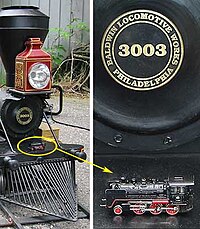Rail transport modelling scales

Rail transport modelling scales are the different sizes at which people build model trains and their surrounding environments. Imagine you have a toy train that you play with at home. Now, imagine if you wanted to make a really cool world with many trains and buildings just like the real world. To do that, you could build a miniature version of everything: the trains, the buildings, and the people. Rail transport modelling scales are just like that, except they help ensure that everything built is the same size and looks like real life.
Now, let's talk about the different scales. The most popular scales are O, HO, N, and Z scales. O scale is the biggest, and trains at this scale look like they are supposed to be “huge” just like a real train. HO scale is smaller than O scale, and N scale is even smaller than HO scale. Z scale is the smallest where the train is tiny compared to other scales.
The size of the trains isn't the only thing that changes with the scales. The size of the buildings, trees, cars, and other things around the train also gets smaller as you go down in scale. This is known as “scaling down”.
So, when someone is building a model train layout, they have the option to choose the scale they want to use. If they are looking for a smaller train that can fit into a small space, they might choose Z or N scale. If they want more detail and larger trains, they might choose HO or O scale.
Rail transport modelling scales help make sure that everything built looks like real life, just in miniature form. So, next time you play with your toy train, imagine building a whole world around it in miniature and you'll start to understand what rail transport modelling scales mean.
Now, let's talk about the different scales. The most popular scales are O, HO, N, and Z scales. O scale is the biggest, and trains at this scale look like they are supposed to be “huge” just like a real train. HO scale is smaller than O scale, and N scale is even smaller than HO scale. Z scale is the smallest where the train is tiny compared to other scales.
The size of the trains isn't the only thing that changes with the scales. The size of the buildings, trees, cars, and other things around the train also gets smaller as you go down in scale. This is known as “scaling down”.
So, when someone is building a model train layout, they have the option to choose the scale they want to use. If they are looking for a smaller train that can fit into a small space, they might choose Z or N scale. If they want more detail and larger trains, they might choose HO or O scale.
Rail transport modelling scales help make sure that everything built looks like real life, just in miniature form. So, next time you play with your toy train, imagine building a whole world around it in miniature and you'll start to understand what rail transport modelling scales mean.
Related topics others have asked about:
